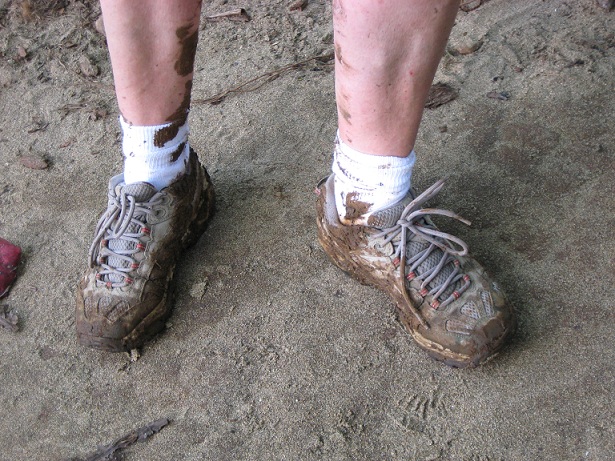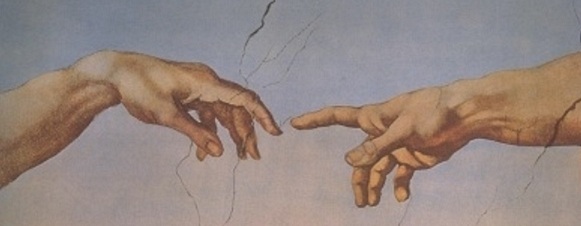Every year spring blows my mind, how it just happens. How everything seems brown and dead, then you begin to see the tendrils of green in the midst of the brown, and before you know it whole plants and flowers have come back to life. Somehow the elements of water and light have combined with the dormant seeds and plants to create just the right conditions for the new sprouts.
On a beautiful spring day I went out to survey my garden, considering which vegetables I’d plant this year. As I dreamed of my first greens and tomatoes, I realized there was already a lot growing, mostly weeds. A lot of weeds. These were the plants I had let go at the end of the last season, too harried trying to harvest the last of the tomatoes and basil as the first frost came. So I have a lot of work to do between eliminating those weeds, preparing the soil, and planting the seeds for my future garden. I tend to favor the cultivating and planting, and not the weeding. Yet those weeds will not be ignored, they just keep perpetuating themselves the more I ignore them.
I am so struck by how my thoughts about the workings of my garden coincide with the teachings of yoga, and how yoga works. Our lives are each a garden which we can consciously cultivate. A healthy garden requires constant tending: cultivating the soil, planning seeds, nurturing the plans, and…pulling those damn weeds. Each of our actions is a seed that we sow. Some of them grow into sturdy healthy plants that nourish us. Some of our actions are more like the weeds, they just get in the way and take nourishment and light away from the healthy plants. In the garden of our lives, we must choose: which do we cultivate? Which do we eliminate?
When I first moved into my house, the garden was full of huge weeds, and the first summer it was all I could do to remove the weeds from the hard-packed Colorado clay soil, and amend the soil for the next spring’s planting. This coincided with a time in my life after the crash of a romantic relationship, when I was preparing for a whole new life. I wasn’t really ready to plant new seeds, new ways of being, as I first had to clear out a lot of old stuff, and prepare the ground of my being for what was to come next.
Oftentimes we plant seeds that just don’t sprout. Perhaps the seeds are too old, like our old ways of being that no longer serve us. Sometimes the seeds sprout, but the results are sickly, not robust. This could be due to not properly tending the seedlings, or perhaps there is some condition in the soil that is not quite right. Perhaps the time is not right, it is too early or too late in the season.
So as I plan this year’s garden, I find myself looking at my life as a whole. And I remember, spring doesn’t just happen in my garden. Those seeds have been dormant, waiting for conducive conditions to sprout. The weeds are what I have allowed to persist in my garden, I haven’t gotten down to their roots, so they keep coming back. Primary to the whole process is the condition of the soil in which we plant the seeds, and how we nurture them once sown. If the conditions aren’t right, the seeds will not thrive.
The beautiful thing about the garden of our lives is that it is a garden, not a forest. We can consciously cultivate it. Granted there are forces that are beyond our control, as any gardener knows. Yet we can choose which seeds to sow, which weeds to pull….and we can prepare the soil for the best potential outcome.
I have been cultivating the soil in the garden of my life through my practices, so that any seeds I plant have the healthiest conditions possible in which to grow. I have been practicing, meditating, studying, contemplating, and journaling. I have been enriching the soil of my being with these practices. Looking at my life from a clearer place I can see the weeds, the habits I keep perpetuating that act to choke out any new seedlings, and little by little I am removing them. And I am considering which seeds to plant, what new ways of being and new projects I want to cultivate.
Consider the garden of your life through contemplation and journaling:
WEEDING
– What are the most persistent weeds in your life?
– What habitual patterns are getting in the way of cultivating a more healthy and productive way of being?
– How can you eliminate them? Do you need support? What are some practical actions you can take?
– Remember: weeds are really hard to get rid of, persistence is key.
PREPARING THE SOIL
– What do you do to take care of yourself?
– What creates health for you physically, mentally, emotionally, and spiritually?
– Amend the soil of your life by practicing what creates greater health and clarity.
PLANTING NEW SEEDS
– What would you like to cultivate most in your life right now?
– How can you do that? Do you need support? What are some practical actions you can take?
NURTURE THE SEEDS
– Remember that the success of any new planting depends on continuing to remove the weeds, and keep the soil and conditions around the plant healthy. How can you do this?







